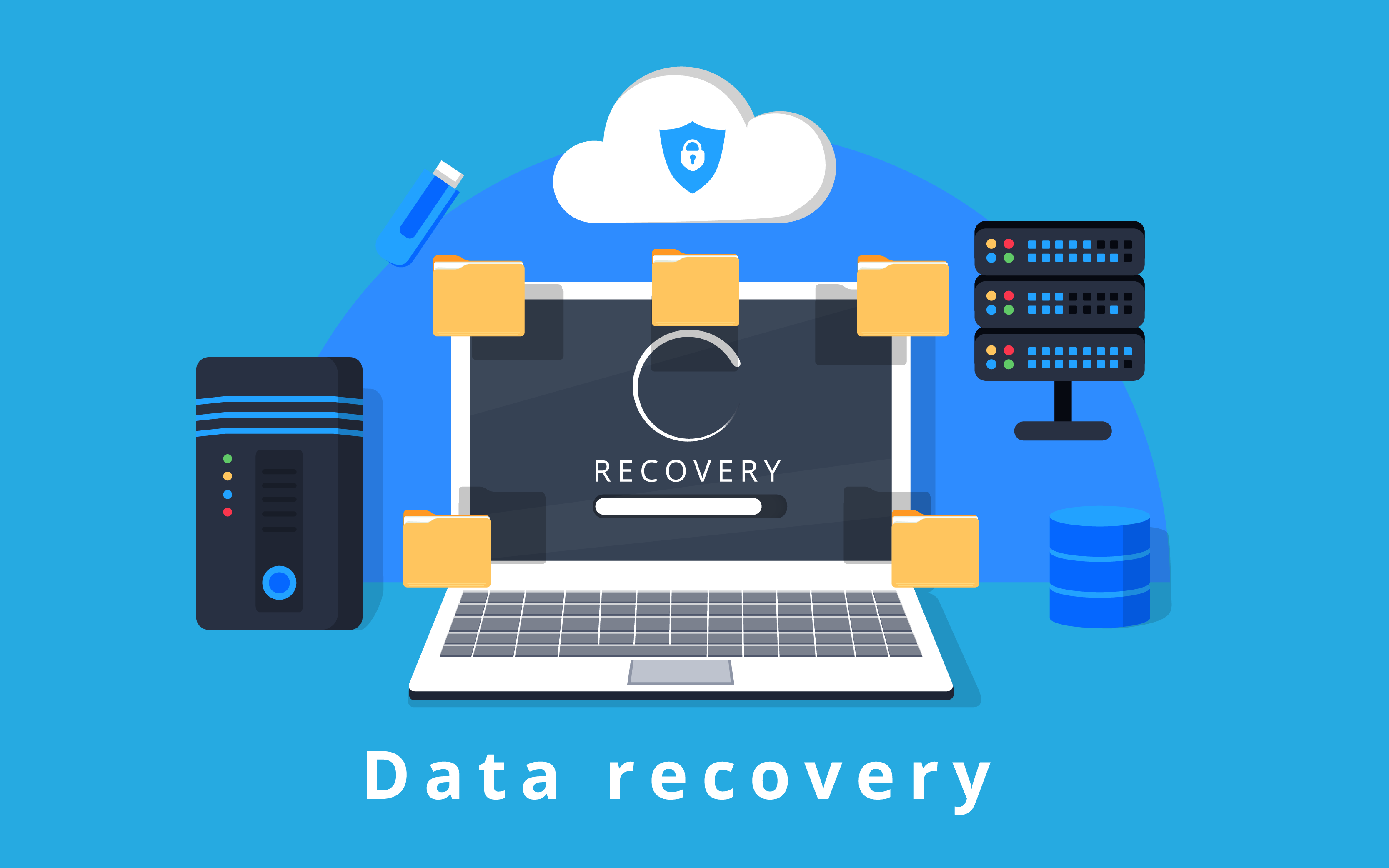You walk into your office Monday morning, coffee in hand, ready to tackle the week. Your team relies on Microsoft 365 for everything: emails, documents, client files, financial records. It's all "safely" stored in the cloud, right?
Then disaster strikes. A ransomware attack encrypts your SharePoint files. An employee accidentally deletes critical project documents. A sync error corrupts months of sales data. Suddenly, you're facing the terrifying reality that many Connecticut small business owners discover too late: Microsoft 365 isn't the bulletproof backup solution you thought it was.
If this scenario sends a chill down your spine, you're not alone. Across Connecticut, 40% of small and medium-sized businesses are experiencing critical data loss from their Microsoft 365 environments. Even more alarming? Many don't realize they're vulnerable until it's too late.
Here's the uncomfortable truth: Microsoft 365 is an excellent productivity platform, but it's not a comprehensive backup solution. The responsibility for protecting your business data ultimately falls on you: and most Connecticut SMBs are dropping the ball.
The Hidden Reality Behind Microsoft 365 "Security"
Let's start with a wake-up call that might surprise you. When you signed up for Microsoft 365, you probably felt relieved knowing your data was "in the cloud" and therefore "safe." Microsoft's marketing certainly emphasizes their enterprise-grade security and reliability. But here's what they don't prominently advertise: you're responsible for your data, not Microsoft.

According to recent industry studies, 58% of small and medium businesses have no backup plan for their Microsoft 365 data. Even more concerning, 73% of SMBs experience security incidents within six months of migrating to Microsoft 365. These aren't just statistics: they represent Connecticut businesses losing invoices, customer databases, legal documents, and years of accumulated business intelligence.
The problem stems from a fundamental misunderstanding of what Microsoft 365 actually provides. Microsoft offers disaster recovery for their infrastructure: ensuring their servers stay online and their services remain available. But if your employee accidentally deletes a SharePoint library, a hacker encrypts your OneDrive files, or a sync error corrupts your email archives, Microsoft's responsibility ends where your data begins.
Connecticut businesses from Hartford to New Haven are learning this lesson the hard way. A manufacturing company in Waterbury lost three months of production data when a disgruntled employee deleted critical files before leaving. A law firm in Stamford discovered their case files were corrupted after a failed software update. A nonprofit in Bridgeport watched helplessly as ransomware encrypted their donor database, forcing them to start from scratch.
Why Connecticut SMBs Are Particularly Vulnerable
Connecticut's business landscape creates unique vulnerabilities when it comes to Microsoft 365 data protection. Our state's concentration of financial services, healthcare, legal practices, and small manufacturing companies means businesses are handling particularly sensitive and regulated data. Yet many of these same businesses lack the IT infrastructure and expertise that larger enterprises use to protect themselves.
Consider the typical Connecticut small business scenario: You've got 15-50 employees, you've moved to Microsoft 365 to reduce IT costs and improve collaboration, and you're focused on running your core business: not managing complex backup systems. This perfectly reasonable approach unfortunately creates a dangerous gap in your data protection strategy.
Human error dominates the threat landscape, accounting for 50% of all data loss incidents. In Connecticut's collaborative business culture, where employees frequently share files and collaborate across departments, the risk multiplies. One misclick in SharePoint, one accidental deletion in OneDrive, one corrupted sync can eliminate months of work.
But human error is just the beginning. Cybercriminals increasingly target small businesses specifically because they know these organizations often have weaker security measures than large enterprises. Small businesses are 10 times more likely to experience a data breach than larger organizations, and Connecticut's proximity to major metropolitan areas makes it an attractive target for sophisticated attacks.
The financial impact is devastating. 94% of companies that experience severe data loss never recover fully. For a Connecticut SMB, this isn't just about lost files: it's about lost customers, regulatory compliance failures, and potentially, the end of your business.
The Five Critical Gaps in Microsoft 365's Native Protection
To understand why Connecticut businesses are losing data, you need to understand exactly what Microsoft 365 does: and doesn't: protect. Microsoft's native tools provide some data retention and recovery options, but they fall short of comprehensive backup in five critical areas:

Gap #1: Limited Retention Periods
Microsoft 365's native retention policies keep deleted items for 30-93 days depending on your plan and configuration. But what happens if you don't notice a corruption or deletion until months later? What if you need to recover a version of a document from six months ago for legal reasons? Microsoft's retention windows create hard deadlines after which your data is permanently gone.
Gap #2: Configuration and Settings Aren't Backed Up
Microsoft 365 environments require extensive configuration: user permissions, security policies, workflow automation, custom applications. If you need to rebuild your environment after a major incident, recreating these configurations manually can take weeks or months. Most businesses don't realize that Microsoft doesn't back up these critical settings.
Gap #3: No Protection Against Ransomware and Malicious Deletion
When ransomware encrypts your SharePoint libraries or OneDrive files, those encrypted files sync back to Microsoft's servers. The backup system Microsoft provides can't distinguish between legitimate changes and malicious encryption. Similarly, if a user with appropriate permissions deliberately deletes files, Microsoft's systems treat this as a legitimate action.
Gap #4: Limited Recovery Granularity
Microsoft's native tools make it difficult to restore specific items, particular versions of documents, or granular data sets. If you need to recover just the Excel spreadsheets from a specific department for a particular date range, you're likely facing an all-or-nothing restoration that could overwrite recent legitimate work.
Gap #5: No Cross-Platform Protection
Many Connecticut businesses use Microsoft 365 alongside other cloud services: Dropbox for client file sharing, Google Drive for certain collaborations, or industry-specific applications. Microsoft's native backup obviously can't protect data in these other systems, creating gaps in your overall data protection strategy.
Real Connecticut Business Impact: Three Case Studies
Let me share three real scenarios that illustrate how these gaps affect Connecticut businesses. While I've changed identifying details to protect privacy, these situations represent the types of data loss incidents FoxPowerIT responds to regularly across the state.
Case Study 1: The Accidental Deletion Disaster
A 25-person marketing agency in Hartford discovered that a junior employee had accidentally deleted their main client project folder in SharePoint while trying to clean up old files. The deletion had happened three weeks earlier, but the team only noticed when they needed to reference materials for a major client presentation. By then, the 30-day retention period had nearly expired, and several critical subdirectories had already been permanently purged. The agency spent over $15,000 in overtime and consultant fees trying to recreate lost materials and nearly lost their biggest client in the process.
Case Study 2: The Ransomware Sync Nightmare
A small law firm in New Haven fell victim to a targeted ransomware attack that encrypted files on one partner's laptop. Because the laptop was syncing with OneDrive, the encrypted files automatically synchronized back to Microsoft's servers, overwriting the clean versions. The firm's SharePoint libraries, which contained thousands of case files and client documents, became infected as the ransomware spread through shared folders. Even though Microsoft's servers were functioning perfectly, all of the firm's data was encrypted and unusable. The firm ultimately paid a $50,000 ransom and spent months rebuilding their document management systems.
Case Study 3: The Corruption Cascade
A small manufacturing company in Waterbury experienced what initially seemed like a minor issue: a few Excel spreadsheets in their production planning folder appeared corrupted. However, investigation revealed that a failed software update had been gradually corrupting files for nearly two months. The corruption had synchronized across multiple SharePoint sites and OneDrive accounts. By the time the problem was fully identified, over 40% of their production data, including custom formulas, supplier databases, and quality control records, was unusable. The company had to halt production for three days while attempting data recovery and ultimately lost an estimated $125,000 in productivity and recovery costs.

Each of these scenarios could have been prevented with proper backup strategies that went beyond Microsoft's native tools. More importantly, each represents not just the immediate costs of data loss, but the long-term impact on business relationships, employee morale, and competitive positioning.
FoxPowerIT's 5-Step Cloud Backup Solution for Connecticut SMBs
After helping hundreds of Connecticut businesses recover from Microsoft 365 data loss incidents, our Smart Paws team at FoxPowerIT has developed a comprehensive five-step approach that addresses every vulnerability we've discussed. This isn't just about adding another backup tool: it's about creating a robust data protection ecosystem that grows with your business.
Step 1: Deploy Comprehensive Third-Party Microsoft 365 Backup
The foundation of effective Microsoft 365 protection is a enterprise-grade backup solution that captures everything Microsoft's native tools miss. We recommend solutions that provide:
Complete Data Coverage: Your backup should protect Exchange Online (emails, contacts, calendars), SharePoint Online (sites, libraries, lists), OneDrive for Business (personal files, shared folders), and Microsoft Teams (channels, conversations, files). Don't settle for partial protection that leaves critical data exposed.
Configuration and Settings Backup: Advanced backup solutions preserve your Microsoft 365 configuration settings, security policies, user permissions, and custom applications. If you need to rebuild your environment, you can restore not just the data but the entire working configuration.
Unlimited Retention Periods: Choose solutions that offer flexible retention policies extending far beyond Microsoft's 90-day limits. For Connecticut businesses dealing with legal, financial, or healthcare regulations, long-term retention isn't optional: it's mandatory.
Granular Recovery Options: Your backup solution should allow you to recover individual emails, specific SharePoint items, particular file versions, or entire site collections with equal ease. When disaster strikes, you need surgical precision in your recovery process.
The key is selecting solutions that operate independently of Microsoft's infrastructure while seamlessly integrating with your existing Microsoft 365 environment. FoxPowerIT partners with industry-leading backup providers who maintain multiple global data centers, ensuring your Connecticut business has access to its data even during regional disasters.
Step 2: Implement Advanced Threat Protection and Monitoring
Backup is only effective if you can detect threats before they cause irreversible damage. Modern cyber threats specifically target backup systems and data recovery processes, so your protection strategy must include real-time monitoring and automated threat response.
Advanced Threat Detection: Deploy solutions that use artificial intelligence and machine learning to identify suspicious patterns in your Microsoft 365 environment. These systems can detect unusual file access patterns, abnormal data deletion volumes, or signs of encryption that might indicate ransomware activity.
Automated Incident Response: Configure your systems to automatically isolate infected accounts, create emergency backup snapshots, and alert your IT team when threats are detected. The faster you respond to data threats, the less damage they can cause.
User Behavior Analytics: Implement monitoring that tracks normal user behavior patterns and alerts you to anomalies. If an employee account suddenly starts deleting large numbers of files or accessing data they don't normally use, you'll know immediately.
Email Security Enhancement: Since email remains the primary attack vector for ransomware and phishing attempts, deploy advanced email security that goes beyond Microsoft's native filtering. This includes attachment sandboxing, URL rewriting, and advanced impersonation protection.
Connecticut businesses are particularly attractive targets for sophisticated social engineering attacks because of our concentration of financial services and healthcare companies. Your threat protection must be sophisticated enough to handle not just automated attacks, but targeted campaigns designed specifically to breach your industry.
Step 3: Establish Multi-Layered Access Controls and Data Loss Prevention
Prevention is always more effective than recovery. Step 3 focuses on implementing controls that prevent data loss incidents before they occur while maintaining the collaborative flexibility that makes Microsoft 365 valuable to Connecticut businesses.
Zero Trust Security Model: Implement conditional access policies that verify user identity and device compliance before allowing access to sensitive data. This means every access request is authenticated and authorized, regardless of whether it's coming from inside or outside your network.
Data Classification and Labeling: Automatically classify your business data by sensitivity level and apply appropriate protection policies. Financial records, customer data, legal documents, and intellectual property should each have different access controls and handling requirements.
Rights Management and Encryption: Implement persistent encryption that follows your documents wherever they go. Even if files are accidentally shared externally or stolen, they remain protected by encryption that can't be removed without proper authorization.
External Sharing Controls: Configure policies that govern how and when employees can share files with external parties. Connecticut businesses often need to collaborate with clients, vendors, and partners, but this sharing should be controlled and monitored.
Mobile Device Management: Ensure that mobile devices accessing your Microsoft 365 environment meet security standards and can be remotely wiped if lost or stolen. With Connecticut's mobile workforce, device security is critical to overall data protection.
Step 4: Create Comprehensive Testing and Documentation Procedures
Even the most sophisticated backup system is useless if you can't successfully restore your data when needed. Step 4 ensures that your backup systems work correctly and that your team knows how to use them during high-stress emergency situations.
Regular Restoration Testing: Schedule monthly tests where you restore sample data from your backups to verify that the backup process is working correctly and that restored data is complete and usable. Test different scenarios: individual file recovery, entire site restoration, mailbox recovery, and configuration restoration.
Disaster Recovery Documentation: Create step-by-step procedures for different types of data loss scenarios. Your documentation should be detailed enough that any member of your team can follow it during an emergency, even if key personnel are unavailable.
Employee Training Programs: Conduct regular training sessions that teach employees how to recognize potential data threats, how to report suspicious activity, and how to use backup systems for routine data recovery needs. The best backup system in the world won't help if your team doesn't know how to use it.
Business Continuity Planning: Develop comprehensive plans that address not just data recovery, but business continuity during extended outages. How will you communicate with customers if your email system is down? How will you access critical business applications during recovery? How will you maintain operations while restoring data?
Compliance Documentation: For Connecticut businesses subject to regulatory requirements, maintain detailed documentation of your backup procedures, retention policies, and recovery capabilities. This documentation is essential for regulatory audits and compliance verification.

Step 5: Partner with Connecticut-Based Managed IT Services
The final step recognizes a crucial reality: most Connecticut small and medium businesses don't have the internal expertise to manage sophisticated data protection systems independently. Partnering with experienced managed service providers gives you enterprise-level data protection without the cost of hiring full-time specialists.
Local Expertise with Regulatory Knowledge: Connecticut businesses operate under unique regulatory environments depending on their industry. A manufacturing company in Waterbury has different compliance requirements than a financial services firm in Stamford or a healthcare practice in New Haven. Local managed service providers understand these nuances and can configure your backup systems accordingly.
24/7 Monitoring and Response: Data threats don't respect business hours. Your managed service provider should offer round-the-clock monitoring of your backup systems and immediate response to threats or failures. When ransomware hits at 2 AM on Sunday, you need experts who can respond immediately.
Proactive System Maintenance: Backup systems require ongoing maintenance, updates, and optimization. Your managed service provider should handle these tasks transparively, ensuring your protection remains effective as your business grows and technology evolves.
Incident Response Expertise: When data loss occurs, every minute counts. Experienced managed service providers have refined incident response procedures that minimize downtime and data loss. They know how to coordinate with Microsoft support, how to communicate with insurance companies, and how to manage the technical and business aspects of data recovery simultaneously.
Cost-Effective Scaling: As your Connecticut business grows, your data protection needs will evolve. Managed service providers can scale your backup solutions efficiently, adding protection for new employees, applications, or data types without requiring major internal investments.
The True Cost of Data Loss vs. Comprehensive Protection
Let's address the question every Connecticut business owner asks: "Is comprehensive backup really worth the investment?" To answer this, we need to look at both the direct costs of data loss and the hidden impacts that can affect your business for years.
Direct Financial Impact of Data Loss
- Average cost of downtime for small businesses: $8,000 per hour
- Average cost of data breach for SMBs: $120,000
- Cost of recreating lost data: $15,000-$50,000 per incident
- Legal and regulatory fines: $10,000-$100,000+ depending on industry
- Emergency IT consultant fees: $200-$400 per hour
Hidden Costs and Long-Term Impact
- Customer confidence and loyalty damage
- Employee productivity loss during recovery
- Competitive advantage erosion
- Insurance premium increases
- Difficulty obtaining cyber insurance coverage
- Management time diverted from growth activities
Now contrast this with the investment in comprehensive Microsoft 365 backup and protection:
- Professional backup solution: $3-$8 per user per month
- Managed security services: $150-$500 per user per month
- Initial setup and configuration: $2,000-$8,000 one-time cost
- Training and documentation: $1,000-$3,000 annually
For most Connecticut SMBs, comprehensive data protection costs less than $500 per month: a fraction of what a single data loss incident could cost.
Making the Smart Choice for Your Connecticut Business
The data is clear, the risks are real, and the solutions are available. Connecticut small and medium businesses can no longer afford to treat Microsoft 365 as a complete backup solution. The question isn't whether you can afford comprehensive data protection: it's whether you can afford to go without it.
Here's how to start protecting your business immediately:
This Week: Audit your current Microsoft 365 configuration to identify gaps in your data protection. Document what data you have, where it's stored, and what would happen if you lost access to it.
This Month: Implement basic improvements like enabling multi-factor authentication for all users, configuring data loss prevention policies, and establishing clear external sharing guidelines.
Next Quarter: Deploy comprehensive third-party backup solutions and begin regular testing procedures. Partner with a qualified managed service provider who understands Connecticut business requirements.
The Smart Paws team at FoxPowerIT has helped hundreds of Connecticut businesses implement comprehensive Microsoft 365 protection strategies. We understand the unique challenges facing businesses from Fairfield County to Litchfield County, and we've seen firsthand how proper data protection transforms business resilience and growth potential.
Your Microsoft 365 data is too valuable to leave unprotected. The businesses that thrive in Connecticut's competitive landscape are those that invest in comprehensive protection before they need it, not after disaster strikes.
Don't let your Connecticut business become another data loss statistic. The solution exists, the technology works, and expert help is available right here in Connecticut. The only question is whether you'll implement comprehensive protection before you need it or after you've learned the hard way that Microsoft 365 alone isn't enough.
Your business data is your competitive advantage, your customer relationships, your financial future. Protect it like the valuable asset it truly is.
Ready to secure your Microsoft 365 environment with comprehensive backup and protection? Contact FoxPowerIT today for a free assessment of your current data protection strategy. Our Smart Paws team will help you implement enterprise-level protection designed specifically for Connecticut small and medium businesses. Visit our website or call us to schedule your consultation.

